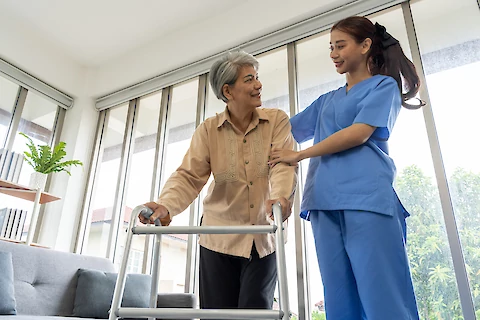
Understanding and managing Seasonal Affective Disorder (SAD) is vital, especially in seniors who may be more susceptible to its effects. SAD is more than the 'winter blues'; it's a form of depression that strikes when the days become shorter and less sunny. SAD awareness helps people understand the signs and the steps to manage it effectively.
Understanding SAD in Seniors
Seasonal Affective Disorder, or SAD, is a type of depression that occurs at certain times of the year. It's most common during the fall and winter months when daylight hours are shorter. Seniors, especially those with limited mobility or those who live alone, may be particularly vulnerable to SAD. This is often aggravated by the fact that the symptoms of SAD can overlap with other conditions common among seniors, such as chronic illnesses or social isolation.
Recognizing the Symptoms of SAD
Recognizing the symptoms is the first step toward SAD awareness and appropriate management. Typical signs include a persistent low mood, loss of interest or pleasure in normal everyday activities, irritability, feelings of despair, guilt or worthlessness, and low energy. Physical symptoms may include sleep problems, changes in appetite or weight, and physical aches.
Healthcare professionals and in-home caretakers play a critical role in identifying these symptoms, given the proximity to the individuals. It's not uncommon for seniors to dismiss these symptoms as 'part of aging' or a 'normal part of winter.' Hence, a trusted caretaker's or family member's observation and concern can be a critical catalyst for treatment.
Managing SAD in Seniors
SAD can have a significant impact on a senior's quality of life. Therefore, it's crucial to adopt an active management approach to alleviate the symptoms. These might include:
Light Therapy
One of the most effective treatments for SAD is light therapy, which involves exposure to a special type of light that mimics natural outdoor light. This therapy affects brain chemicals linked to mood, easing SAD symptoms.
Maintain a Regular Schedule
Maintaining a regular schedule can also be beneficial. Regular mealtimes, waking up times, and bedtimes can provide a sense of structure and may help regulate the circadian rhythm, which can be disrupted in people with SAD.
Stay Active
Activity is another key element in managing SAD. While it's tempting to stay indoors during the colder months, physical activity can boost mood and energy levels. This doesn't necessarily mean rigorous exercise; leisurely walks, gentle yoga, or simple stretching exercises can all have a significant impact. If you're starting a new activity, check with your doctor first.
Senior Helpers Honolulu-Kahala-Kailua Offers Supportive Care for Seniors Throughout the Year
Seasonal Affective Disorder (SAD) awareness and management strategies can enhance seniors' quality of life, particularly during the shorter, less sunny days of the year. At Senior Helpers Honolulu-Kahala-Kailua, we're passionate about providing the support and care that seniors in our community need to thrive. If you or a loved one reside in Kailua, Waimanalo, Waikiki, Kahala, or MCBH Kaneohe Bay and require assistance with managing SAD or any other aspect of senior care, don't hesitate to reach out to us today.